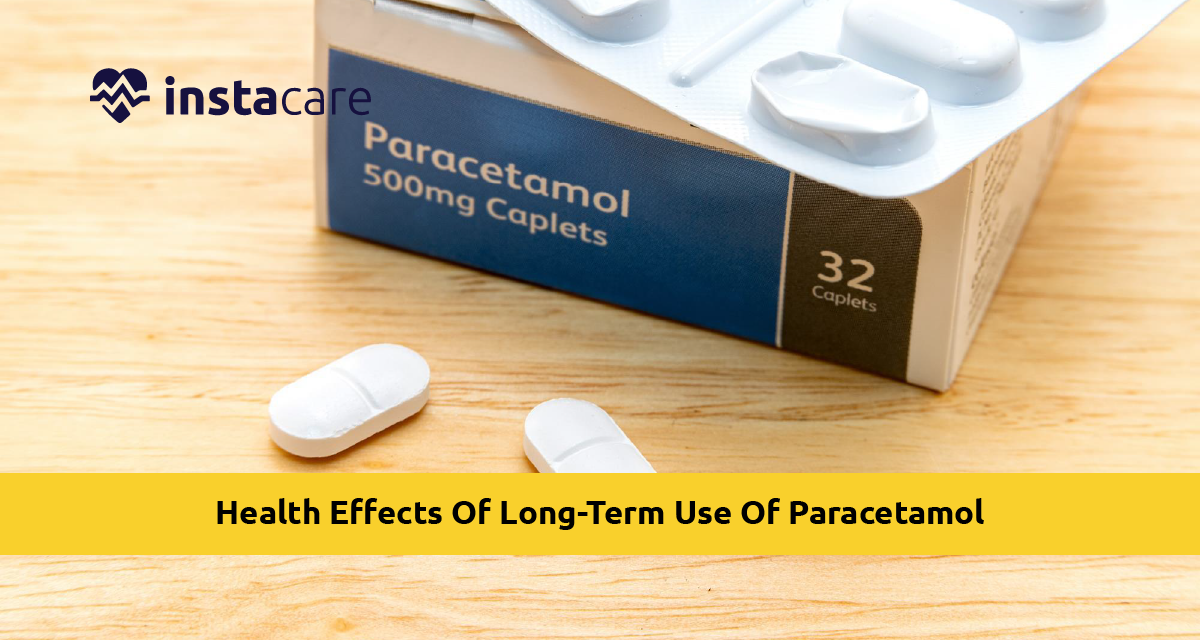Estimates place the yearly sales of paracetamol in the UK at around 6300 tons or over 70 pills per person. With paracetamol being considered a safe and efficient therapy for a wide range of painful ailments, the general public's opinion of the medicine is mainly positive.
The widespread use of paracetamol, however, may give rise to
false beliefs or preconceptions that it is entirely safe, which is not the
truth, as we shall cover in this article. To support our argument, overuse or
abuse of paracetamol is now the UK's most significant cause of liver failure.
To make sure you utilize this popular medicine safely and successfully, it is
always advisable to educate yourself about it.
What You Must Know About Paracetamol?
For many people, paracetamol, often known as acetaminophen,
is the medicine of choice when it comes to pain treatment. Analgesic and
antipyretic (anti-fever) in nature, paracetamol is a non-opioid pain reliever
without anti-inflammatory qualities.
For this reason, even though the general public frequently
mistakenly includes paracetamol in the same class as medications like aspirin
or ibuprofen, it is not considered a Non-Steroidal Anti-Inflammatory Drug
(NSAID).
In addition to treating and managing high fevers from
diseases like the flu or the common cold, paracetamol is most frequently used
to treat mild to moderate pain, including headaches, toothaches, and non-nerve
pain. When an inflammatory condition like arthritis is the source of pain,
NSAIDs like ibuprofen are a better option for managing pain than paracetamol.
In addition to being safer than NSAIDs and opioids, paracetamol is advised for
individuals who cannot be treated with NSAIDs, such as those with asthma,
pregnant or nursing mothers, and children under the age of twelve.
How Is Paracetamol Applied? How Is Paracetamol Taken?
Due to its complexity, the scientific community needs to
understand the mechanism of action of paracetamol fully. Both peripheral and
central activities work together to produce the effects of paracetamol.
The suggested amount of paracetamol to take is one or two
500mg tablets at a time, up to four times in 24 hours, with a 4-hour interval
between each intake. The average paracetamol tablet will start acting in about
an hour and functioning for around five hours after that. From person to
person, these numbers may differ.
Some Paracetamol Side Effects To Be Aware Of
None of the medications, including paracetamol, are without
adverse effects. The frequent side effects of paracetamol are given below; most
are uncommon and moderate, with one noteworthy exception:
- A lethal overdose might result in renal damage and liver
toxicity.
- Sensitivity responses that may result in swelling or rashes
on the skin
- Hematologic diseases
- Flush, tachycardia (rapid heartbeat), or hypotension
Liver and renal damage is the most likely adverse effect of
taking too much paracetamol. It is essential to adhere closely to instructions
and recommendations as a re.sAst near, never take more than 4 grams of
paracetamol in 24 hours (4 doses of 1g); always give yourself at least four
hours' notice between doses.
Because paracetamol is present in so many common OTC
medications, you run the risk of taking more than you should if you are not
careful. Kindly verify whether the following medications also contain
paracetamol:
- Prescription drugs for migraines
- Common antiviral drugs, such as Lemsip or Night Nurse
- Prescription medications like co-dydramol and co-codamol
People who misuse alcohol, drugs, or depression, have
chronic pain, take many medications that include paracetamol at once, or suffer
from chronic pain are the most likely to get liver damage or failure due to
paracetamol.
Is It Really As Safe To Use Paracetamol As We Believe?
As with any drug, overdosing on paracetamol may be
hazardous. Every type of painkiller, whether prescribed or over-the-counter,
has some danger, particularly when used often or in large amounts. One of the
primary worries about paracetamol is the way that taking too much of these
medicines might cause deadly and challenging-to-treat liver harm.
The possible effects of paracetamol on liver cells were
discovered by researchers at the University of Edinburgh in 2017. According to
the study, paracetamol may occasionally damage the structural ties that hold
neighbouring cells in the liver together. The most common cause of liver
failure in the US is an overdose of paracetamol, which accounts for around 46%
of all causes and has a 30% fatality rate. Health officials in Australia and
New Zealand expressed worry in 2015 about the high number of children—the
majority of whom were five years old or younger—who experienced acute liver
failure as a result of taking paracetamol incorrectly.
Additionally, chronic paracetamol users—those who usually
take significant, daily dosages over several years—may raise their risk of
mortality or develop difficulties in the kidneys, intestines, and other organs,
according to a 2015 study by British researchers published in the British
Medical Journal. Eight cohort studies from the US, UK, Sweden, and Denmark were
included in the review.
According to two of the eight studies, there is a 63% higher
chance of death for long-term paracetamol users. According to one study, there
was a 36% chance of experiencing intestinal adverse effects, including bleeding
in the gastrointestinal tract.
- Professor Michael Doherty conducted a similar research in
2011 with over 900 patients (aged 40 and above) taking ibuprofen, paracetamol,
or both for persistent knee discomfort.
- One in five people using paracetamol experienced internal
bleeding after 13 weeks.
- Chronic paracetamol usage may potentially result in cardiac
issues.
- Four of the eight observational studies included in the systematic
analysis revealed an increased risk of cardiovascular issues, ranging from 19
to 68 percent.
- Another study found a correlation between heart attacks and
stroke and higher doses of paracetamol.
Long-Term Paracetamol Usage
It has also been associated in the systematic review with a
higher incidence of renal impairment. Three research studies demonstrated that
higher doses worsen kidney function, whereas four studies showed impacts on the
kidneys. According to the analysis of all eight cohort studies, the risk was
always dose-dependent, meaning the risk increased with the dosage.
Finally,
Paracetamol is a safe over-the-counter pain medication when
used as directed and in the prescribed dosage. Treating it as a severe medicine
rather than a sweet you may take daily is essential.
The safest course of action is still to visit a medical
professional about the use of over-the-counter medications or any other
health-related issue. Obtaining an accurate diagnosis and treatment plan is the
best approach to minimize any health risks.
Please book an appointment with the best General Physician in Lahore, Karachi, Islamabad, and all major cities of Pakistan through InstaCare, or call our helpline at 03171777509 to find a verified doctor for your disease.

